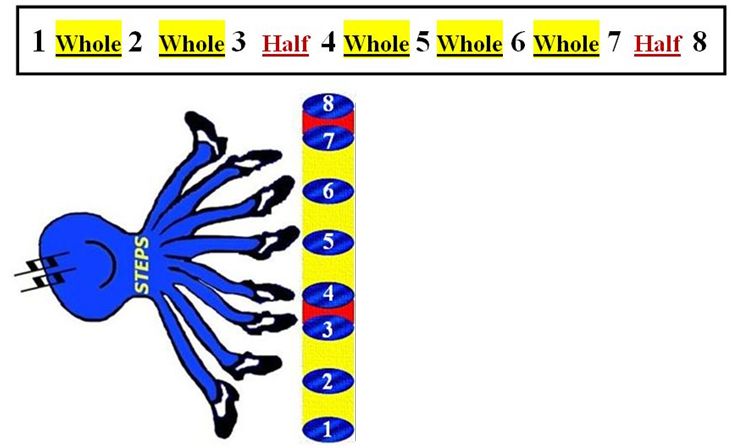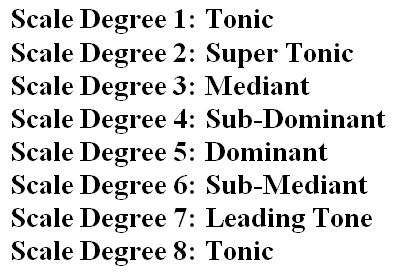THE MAJOR SCALE
The most common mode is the Ionian mode, which is named the Major Scale.


Remember, scales can be built on any note and that scale degrees 1 and 8 share the same letter name.
You already know that scale degrees 1 and 8 are called the Tonic.
All scale degrees have names that serve as labels and are listed below.
Music theory involves the relation of pitch function, which has determined the names of each scale degree.


Now let’s build a D Major Scale, where the Tonic is the pitch D.










